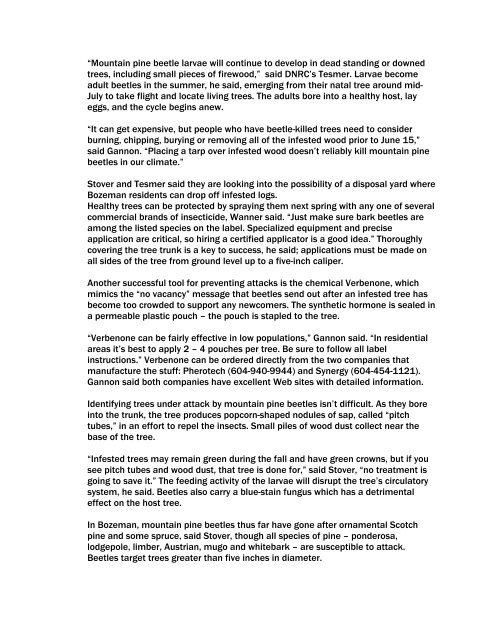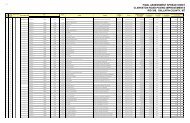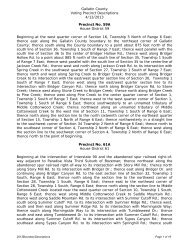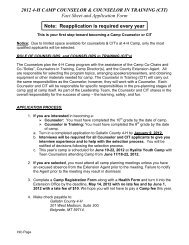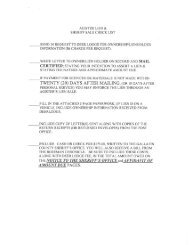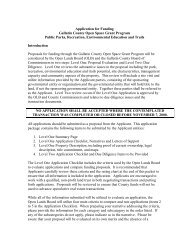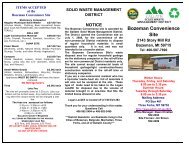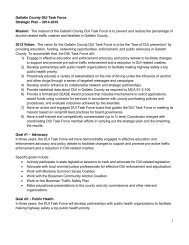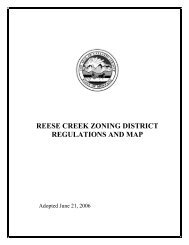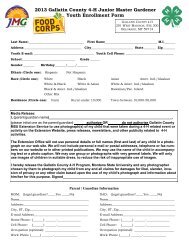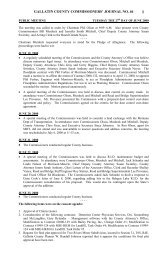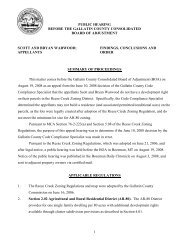Scientists offer advice for combating Bozeman pine beetle outbreak
Scientists offer advice for combating Bozeman pine beetle outbreak
Scientists offer advice for combating Bozeman pine beetle outbreak
Create successful ePaper yourself
Turn your PDF publications into a flip-book with our unique Google optimized e-Paper software.
“Mountain <strong>pine</strong> <strong>beetle</strong> larvae will continue to develop in dead standing or downed<br />
trees, including small pieces of firewood,” said DNRC’s Tesmer. Larvae become<br />
adult <strong>beetle</strong>s in the summer, he said, emerging from their natal tree around mid-<br />
July to take flight and locate living trees. The adults bore into a healthy host, lay<br />
eggs, and the cycle begins anew.<br />
“It can get expensive, but people who have <strong>beetle</strong>-killed trees need to consider<br />
burning, chipping, burying or removing all of the infested wood prior to June 15,”<br />
said Gannon. “Placing a tarp over infested wood doesn’t reliably kill mountain <strong>pine</strong><br />
<strong>beetle</strong>s in our climate.”<br />
Stover and Tesmer said they are looking into the possibility of a disposal yard where<br />
<strong>Bozeman</strong> residents can drop off infested logs.<br />
Healthy trees can be protected by spraying them next spring with any one of several<br />
commercial brands of insecticide, Wanner said. “Just make sure bark <strong>beetle</strong>s are<br />
among the listed species on the label. Specialized equipment and precise<br />
application are critical, so hiring a certified applicator is a good idea.” Thoroughly<br />
covering the tree trunk is a key to success, he said; applications must be made on<br />
all sides of the tree from ground level up to a five-inch caliper.<br />
Another successful tool <strong>for</strong> preventing attacks is the chemical Verbenone, which<br />
mimics the “no vacancy” message that <strong>beetle</strong>s send out after an infested tree has<br />
become too crowded to support any newcomers. The synthetic hormone is sealed in<br />
a permeable plastic pouch – the pouch is stapled to the tree.<br />
“Verbenone can be fairly effective in low populations,” Gannon said. “In residential<br />
areas it’s best to apply 2 – 4 pouches per tree. Be sure to follow all label<br />
instructions.” Verbenone can be ordered directly from the two companies that<br />
manufacture the stuff: Pherotech (604-940-9944) and Synergy (604-454-1121).<br />
Gannon said both companies have excellent Web sites with detailed in<strong>for</strong>mation.<br />
Identifying trees under attack by mountain <strong>pine</strong> <strong>beetle</strong>s isn’t difficult. As they bore<br />
into the trunk, the tree produces popcorn-shaped nodules of sap, called “pitch<br />
tubes,” in an ef<strong>for</strong>t to repel the insects. Small piles of wood dust collect near the<br />
base of the tree.<br />
“Infested trees may remain green during the fall and have green crowns, but if you<br />
see pitch tubes and wood dust, that tree is done <strong>for</strong>,” said Stover, “no treatment is<br />
going to save it.” The feeding activity of the larvae will disrupt the tree’s circulatory<br />
system, he said. Beetles also carry a blue-stain fungus which has a detrimental<br />
effect on the host tree.<br />
In <strong>Bozeman</strong>, mountain <strong>pine</strong> <strong>beetle</strong>s thus far have gone after ornamental Scotch<br />
<strong>pine</strong> and some spruce, said Stover, though all species of <strong>pine</strong> – ponderosa,<br />
lodgepole, limber, Austrian, mugo and whitebark – are susceptible to attack.<br />
Beetles target trees greater than five inches in diameter.


